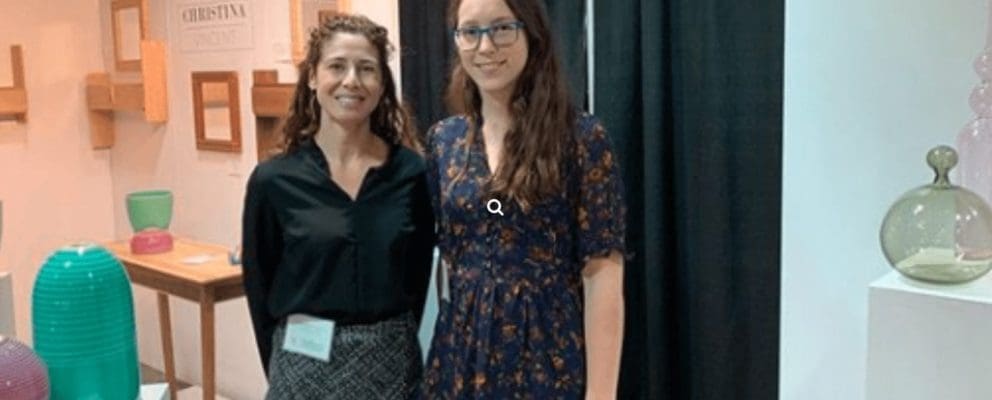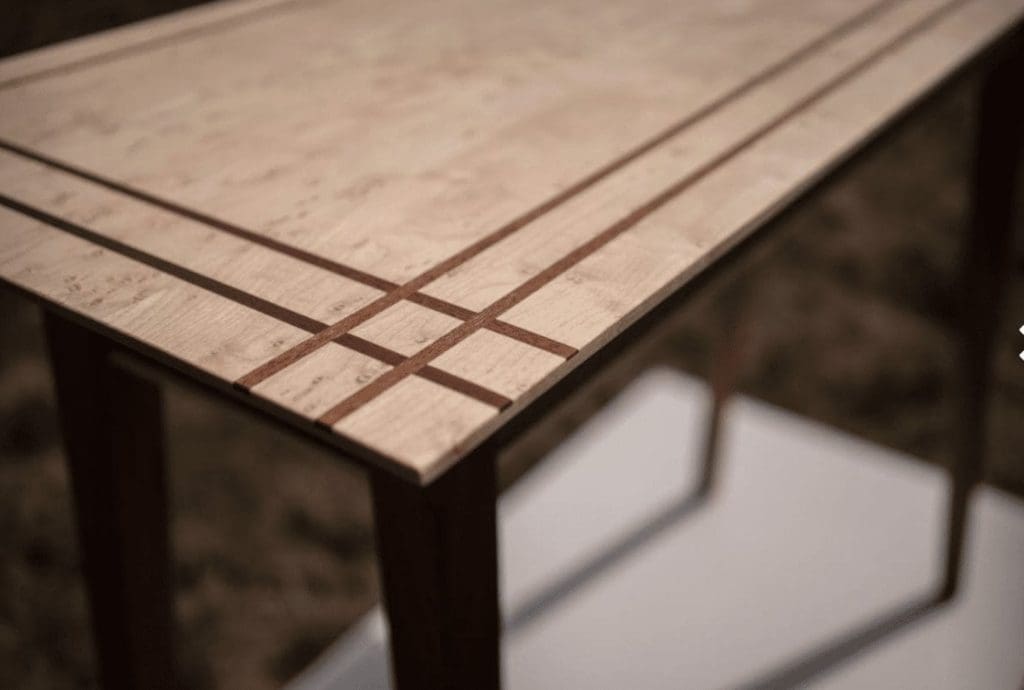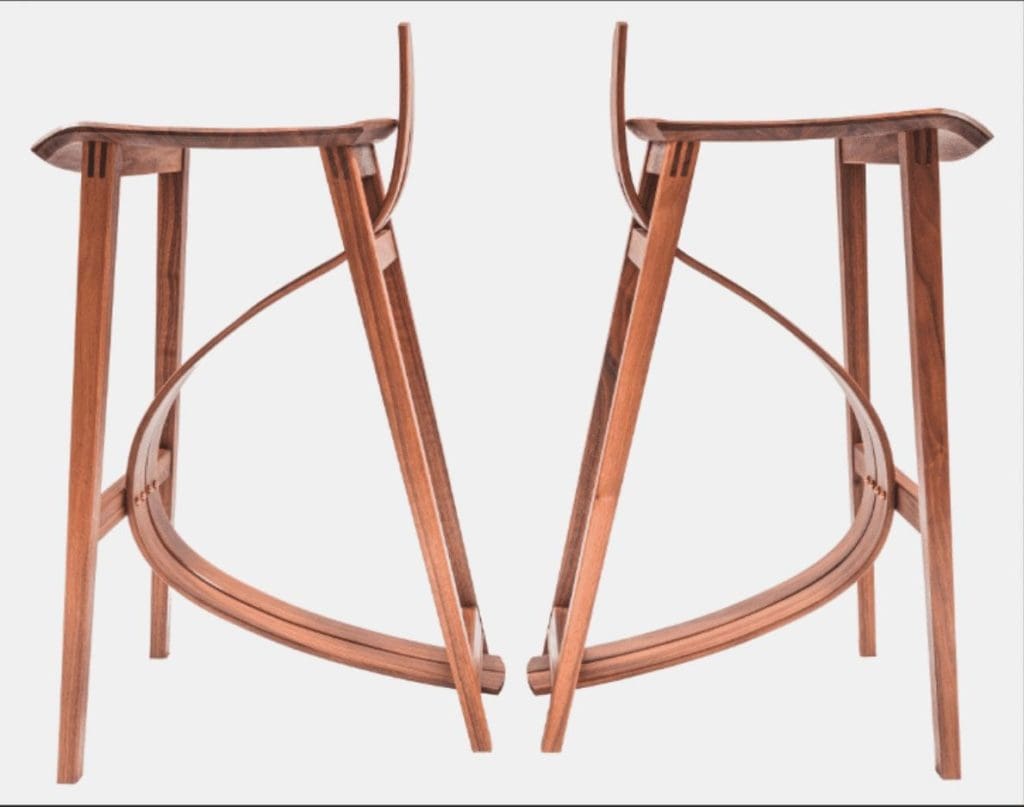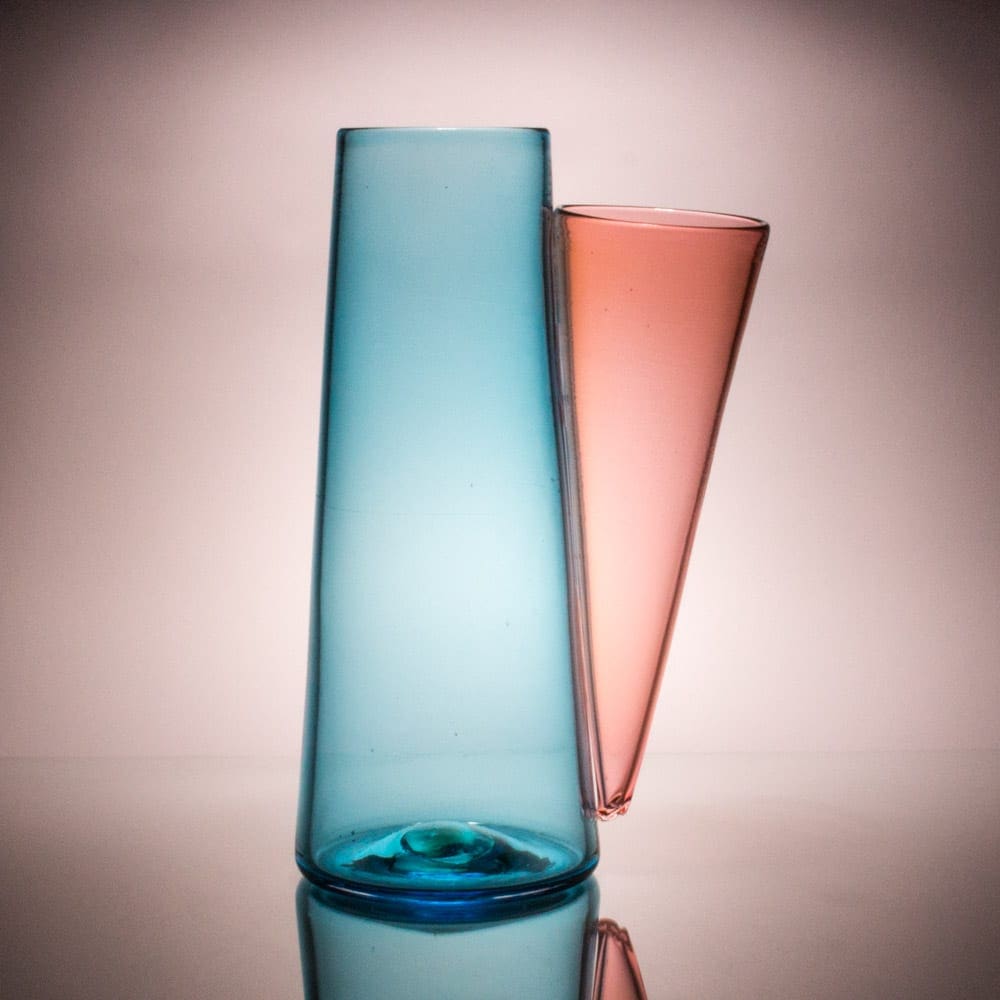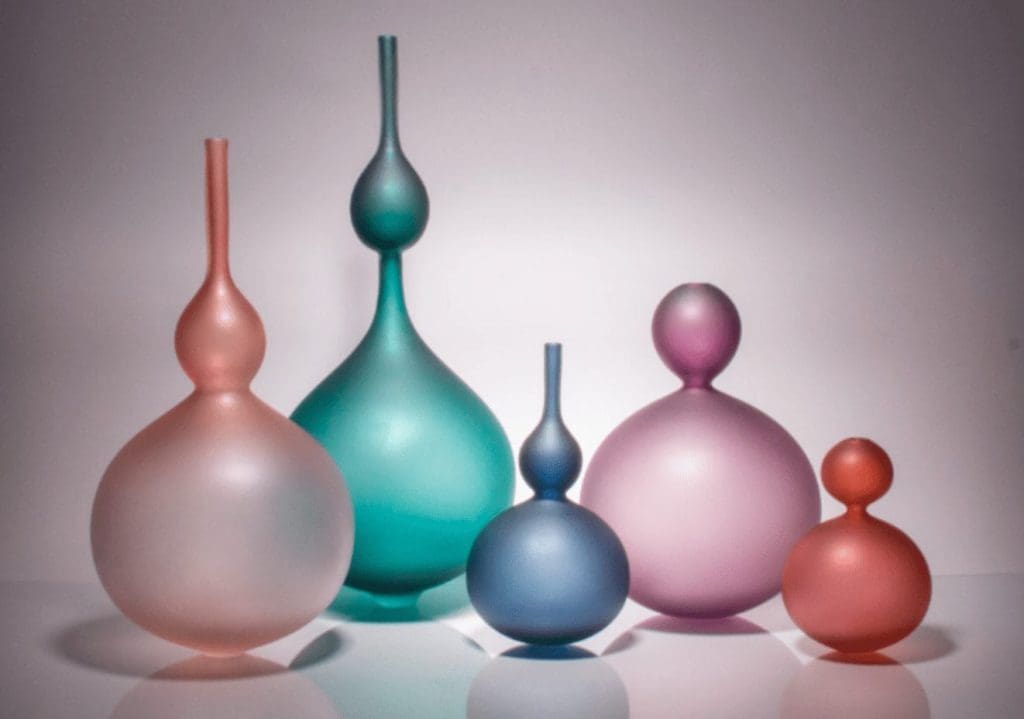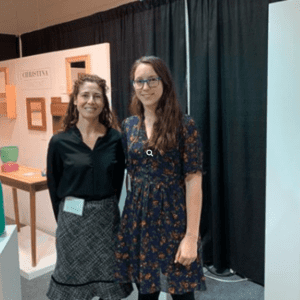
At the Society of Arts + Crafts we have the privilege of working with amazing artists, especially through our Mentor Program. J Shannon Floyd and Christina Vincent are outstanding glass and furniture artists and our most recent CraftBoston Mentees. We love them and their work and we are grateful to play any part in their career as they move forward. Below they answered some questions about their work and their advice for first time artists at CraftBoston.
Tell us a little bit about who you are and what you make.
Floyd: Hello! My name is Shannon Floyd and I am a Cambridge based Glass Artist and participant in the Society of Arts and Crafts Mentor Program for Craft Boston Holiday 2019.
Vincent: I am a Maine native. I love Maine; hiking, swimming, gardening, anything outdoors really! I especially love the uniqueness of living on North Haven, an unabridged island in Maine’s archipelago. I came to North Haven for a summer and it became my home. Life here is unlike any place I have ever lived, with jaw dropping scenery, four seasons of ever changing raw natural beauty, to get here takes a boat or plane, and inspiration is never that far away. This inspiration can be seen in each piece of art I design and create.
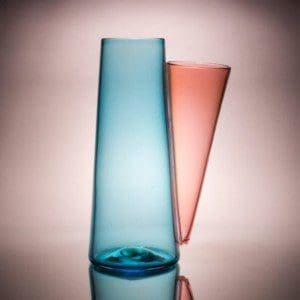
How did you get started in your practice and how has it grown?
Floyd: I started gaining experience working with glass as a student at MassArt where I was drawn to the magic of the material as well as the constantly evolving challenge it represents. Since graduating in 2015, I have worked at a number of glass studios in the Boston area, learning and gaining valuable experience. Additionally, I have had opportunities to travel throughout the US to craft schools to take, ta, and teach a variety of classes. Currently, I am focusing on developing and marketing my own line of work while also working at Almost Perfect Glass and NOCA Glass School in Cambridge, MA.
In my personal work I am inspired by mid century modern and classic Scandinavian designs. I’m drawn to clean lines and elegant forms. I also like to have fun and love bright colors which is where pieces like my miniature traffic cones come into play.
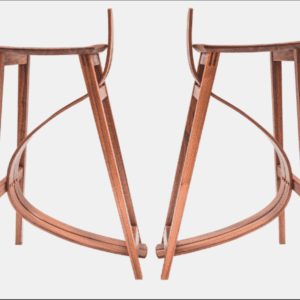
Vincent: Although a Maine native I came to North Haven by chance. Previously, I had been doing interior design work with Susan Sargent Designs in Vermont and, unsure of what to do on the island, I became a fisherman before finding carpentry work. After a couple of years of carpentry, my husband and I purchased land and decided to build our house. While building our home, I began to create small pieces of furniture out of salvageable wood. This period was “building furniture as a carpenter would think, not as a woodworker would think.” I became interested in taking classes at the Center for Furniture Craftsmanship in Rockport. Stopping by one Saturday, I met the founder, Peter Korn, who happened to be the only person in the office. He took me around the center, introduced me to instructors and students. I will admit to being intimidated watching beautiful pieces come together at the center but, nonetheless, decided to sign up for a course. I had set upon the path from carpenter to woodworker.
Since transitioning from carpentry to woodworking and choosing to set up a one woman shop my business has grown each year in audience, galleries that showcase my work, and attendance to fine craft events.
How does your material change your relationship to high end fairs?
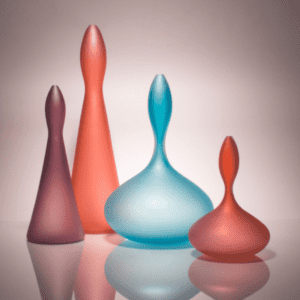
Floyd: The overhead for a glass artist is a lot higher than many other crafts and mass produced glasswares are made in a factory and are therefore cheaper and faster to make. As a result, people often don’t understand why Hand Blown Glass is so pricey. This, combined with the fact that glass obviously, can be quite fragile means people put a lot of thought and consideration into their purchases. That being said, people at shows like Craft Boston can tell the difference between a glass object that has been made in a factory and one that has been made by hand. It’s refreshing to be in a community that appreciates the amount of time and labour that goes into a craft such as glass.
Vincent: As a fine woodworker My mission is to create innovative pieces coupled with artistic applications while highlighting the beauty of natural wood. I intend for each piece to be versatile; useful and lasting, while intriguing interest and engagement.
Each piece is handmade in a small scale wood studio. I create only one of a kind pieces and custom orders. There are no industrial machines or giant production lines of product being processed. Each finished piece is a high end product which can be easily seen in the traditional and contemporary joinery, the angles and tapers, and the overall design itself. Having one of a kind quality pieces stands out at high end events as that is exactly what this clientele is looking for.
How does CraftBoston help you at this stage of your career?
Floyd: CraftBoston marked the start of a major career shift for me. It provided me with the boost in confidence I needed to move away from ‘gaffing’ which is basically making other people’s
designs for them to sell to focusing on producing and selling my own work so that hopefully in
the not too far off future I will be able to support myself entirely on my own line of glassware.
Vincent: CraftBoston is a wonderful event. It brings together talented makers of various mediums to network and showcase individual and unique art and craft. I feel like CraftBoston sets the stage for me as a maker to expand my client base, network, and create a stronger name/brand for business.

Do you have any advice for first time exhibitors?
Floyd: To first time exhibitors I would recommend first and foremost, don;t be too intimidated! It’s okay to feel overwhelmed and like you aren’t good enough, just go in there and do your best with what you have. Another thing I would recommend is to take advantage of all the resources you have available to you. I’m really lucky in that I share a studio space with a number of other professional glass artists who also support themselves by selling their work at craft shows. I relied on them a lot to calm my nerves and answer my questions. One piece of advice from them that really stuck with me was don’t invest a ton of money into your display until you figure out what you actually need. I checked out a handful of shows, including CraftBoston Spring before the holiday show (another thing I’d recommend doing!) to get an idea of how other people were displaying their work and while it was tempting to invest a lot of money into getting the perfect display. I’m glad I followed the advice of my studio mates: they lent me the basics like lighting and pedestals and I purchased a few smaller things. This allowed me to have a professional looking setup without breaking the bank. Now, having done a show, I have a much
better idea of what worked versus what didn’t work and feel a lot more confident actually investing money into the next one. I understand that not everyone is as lucky as I am in their ability to borrow but if you can do it I would highly recommend it.
Vincent: For first time exhibitors I would recommend not hesitating to reach out to the CraftBoston staff if they had any questions or concerns. Plan an interesting but clean booth design and product layout. Have business cards and any pertinent information readily available. Be present and welcoming.
Make sure to follow Shannon and Christina on social media (@j_shannon_floyd and @christinamvicent) and check out their websites www.jshannonfloyd.com and www.christinamvincent.com


